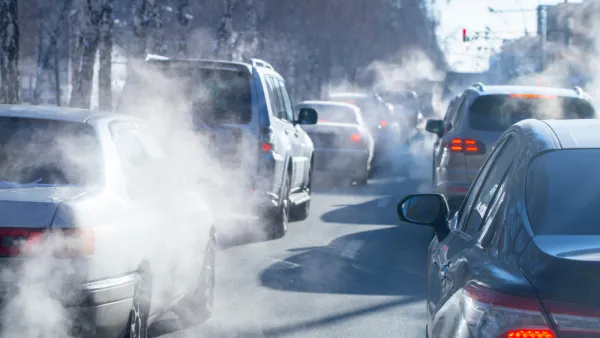With the adoption of the "Spare the Air - Cool the Climate" program, the Bay Area's air quality regulatory agency has broadened its mission to make reduction of greenhouse gases a paramount goal, along with protecting public health.

Improving air quality has been the focus of the first regional air pollution control agency in the country since its creation by the California Legislature in 1955. However, like many other regional air quality regulatory agencies in California, the Bay Area Air Quality Management District (BAAQMD) has broadened its scope to include climate protection.
With the governing board's unanimous approval of the new program, “Spare the Air, Cool the Climate," also called the 2017 Clean Air Plan, on April 19, that mission has greatly expanded. The program "lays out 85 measures that seek to reduce pollutants from industry, transportation, agriculture, homes and businesses," reports Kurtis Alexander for the San Francisco Chronicle.
No regulations take effect immediately, only a commitment to move forward. Some can be implemented by the district directly, but many will require joint action with other agencies. The district committed $4.5 million to initiate such partnerships.
"The plan lays the groundwork for bringing Bay Area greenhouse gas emissions 40 percent below 1990 levels by 2030 and 80 percent below 1990 levels by 2050," reports Guy Kovner for The Press Democrat. The first goal is consistent with new state legislation, SB 32.
BAAQMD has a long history of regulating stationary sources of emissions, such as from oil refineries, and even the burning of wood in private residences. The district has little control over mobile sources, which compose the largest source of the region's emissions.
"To address transportation, the district will work alongside cities and transit agencies to encourage greener travel —making roads friendlier for electric cars with more charging stations and encouraging regional ride-shares and carpools," adds Alexander. But it has its work cut out as even in the progressive, affluent Bay Area, electric vehicles compose "less than 2 percent of the 5.5 million registered vehicles in the Bay Area," reports Kovner.
Alexander adds that the district "will also seek to discourage overall car use by advocating for freeway tolls during high-traffic times, reductions in on-street parking and a higher gasoline tax."
Related in Planetizen: San Francisco Ahead of Schedule on Ambitious Greenhouse Gas Reduction Goals, April 21, 2017
Hat tip to Janet Strömberg
FULL STORY: Bay Area air-quality agency tackles climate change

Analysis: Cybertruck Fatality Rate Far Exceeds That of Ford Pinto
The Tesla Cybertruck was recalled seven times last year.

National Parks Layoffs Will Cause Communities to Lose Billions
Thousands of essential park workers were laid off this week, just before the busy spring break season.

Retro-silient?: America’s First “Eco-burb,” The Woodlands Turns 50
A master-planned community north of Houston offers lessons on green infrastructure and resilient design, but falls short of its founder’s lofty affordability and walkability goals.

Test News Post 1
This is a summary

Analysis: Cybertruck Fatality Rate Far Exceeds That of Ford Pinto
The Tesla Cybertruck was recalled seven times last year.

Test News Headline 46
Test for the image on the front page.
Urban Design for Planners 1: Software Tools
This six-course series explores essential urban design concepts using open source software and equips planners with the tools they need to participate fully in the urban design process.
Planning for Universal Design
Learn the tools for implementing Universal Design in planning regulations.
EMC Planning Group, Inc.
Planetizen
Planetizen
Mpact (formerly Rail~Volution)
Great Falls Development Authority, Inc.
HUDs Office of Policy Development and Research
NYU Wagner Graduate School of Public Service




























